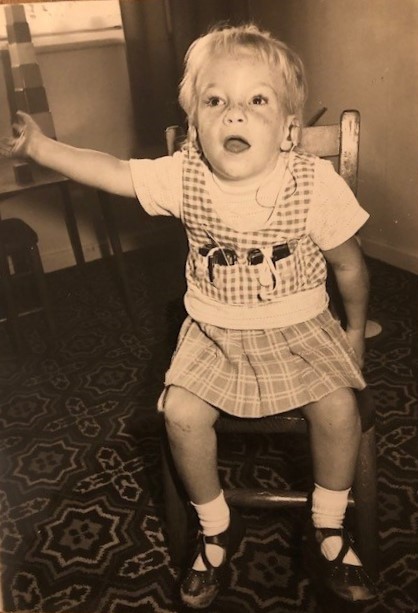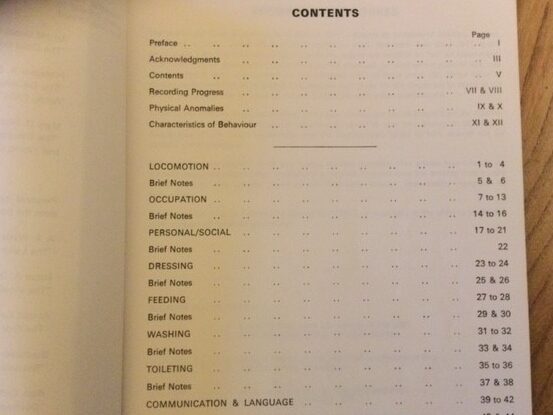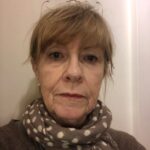Celebrating the pioneers who built Sense
Maggie joined Sense in 1975. Like so many of our earliest members, she was also a new mother to a baby disabled by rubella. Maggie still found time to support other parents and be part of our movement to transform the lives of all deafblind children and adults, and their parents. We owe so much to this small group of volunteers, all of whom gave an extraordinary amount of time, goodwill and effort to establish Sense.
My career had been at Great Ormand’s Street Hospital in the 1950s and 60s, as a paediatric nurse. I’d been shown some shocking instances of children in care. The images of those visits are imprinted on my brain. When I joined Sense in 1975 (then the National Association Deafblind and Rubella Handicap – NADBRH) the people I met were completely devoted to achieving something better for our children. And we were very determined.
There’s quite a story to tell, and many men and woman who really deserve to be acknowledged: Peggy and Peter Freeman, Jessica Hill, Norman and Sue Brown, Lindy Wyman, and Margaret Brock and other young mothers.
The things that these people did to establish Sense as an official organisation mustn’t be forgotten. Very little was known about rubella back then, and even less about how to properly care for people disabled by the disease. The volunteers who decided to change this really were pioneers.

The Progress Guide
In 1974, my daughter Claudine was born. Back then, the nation was still experiencing waves of measles, mumps and rubella – with no vaccine. I suspected that I’d been in contact with someone who had rubella while I was pregnant. I cried nearly every day of my pregnancy. Like so many other babies, my Claudine was born with very complex disabilities.
A neighbour mentioned having heard about a rubella association over the radio. I wrote to them and was sent lots of valuable information and contacts. It wasn’t long before I started volunteering time to support their efforts. Some of the members had been part of the first group assembled by Peggy and Peter Freeman in 1955 (called ‘The Rubella Group’), others were new.
I became part of the committee and took on many different roles. My responsibilities included Secretary and Chair of the London and Southwest region, and I’d represent these areas in our national meetings. I also set up a helpline from my house phone, so parents from across the country could call and ask for advice.
Jim Dale was on the committee with us. He was a Special Educational Needs teacher who’d devoted himself to the cause of supporting families of children with rubella. It was a lifetime commitment, even though he didn’t have any personal connection with the cause. He wrote a booklet called ‘The Progress Guide’ which was absolutely fundamental in supporting childhood development.
What it did was to provide lists of things that children might do at different stages of their development. There were tick boxes next to each milestone, and guidance on how to help your child along using different methods of stimulation. Now, I’d read every book going on the subject of rubella, and this booklet stood out – there was nothing else like it at the time. It meant a lot to me, and it had a profound effect on Claudine.

I used the checklist in conjunction with things learned from other parents, and my own research. At 15 months, Claudine started opening her eyes for the first time and looking at her hands.
It was this Progress Guide that kept prompting me forward and gave me a direction to go in when so many other voices were telling me there was no hope. One official assessment deemed Claudine “ineducable”. That was a huge shock to me – I’d never even heard the term before.
Well, I knew that wasn’t the case. I’d seen her learning – and learning fast. The guide really helped me prove that she wasn’t “ineducable” she was using her brain to learn and was catching up.
Money to make our dreams a reality
Meanwhile, ‘Sense’ was developing too. Pryce Owen, our volunteer treasure had been busy applying for funding. One day in 1979 he announced that we’d won the Magpie Appeal (Magpie was the ITV equivalent of Blue Peter) – suddenly there was a lot to do!
We were only a little committee, and it was up to us to manually collect and process cash donations raised by the TV appeal. It was incredible, we had to work really hard because something like £250,000 had been raised – in those days, that was an enormous amount of money.
On top of that, we were told we had to spend this money in a month! We knew what we were aiming for: we wanted a Family Centre for early years education, and we wanted homes for older children to live in. Some of the parents who’d been supported and involved with the group were getting quite elderly, and they wanted to know that there was somewhere for their children to go and be looked after.
We quickly bought two large properties, one in Market Deeping, which became residential, and another in Ealing, where families could come for an assessment. This is where Lindy Wyman first set up our educational programme too.
It was a remarkable time. We worked so hard to set up ‘NADBRH’ and now, with the funding, we got a new name and became established as a professional body. Sense started to be able to offer the support we’d so hoped for. It was wonderful to see.
The following year, we hired our first CEO, Rodney Clark, and a new chapter began.
The Sense story
Sense was founded over 65 years ago by two mothers, Peggy Freeman and Margaret Brock. Find out more about our roots here on Our Story page, and keep an eye on our blog as we explore more inspiring stories from our important early years.

